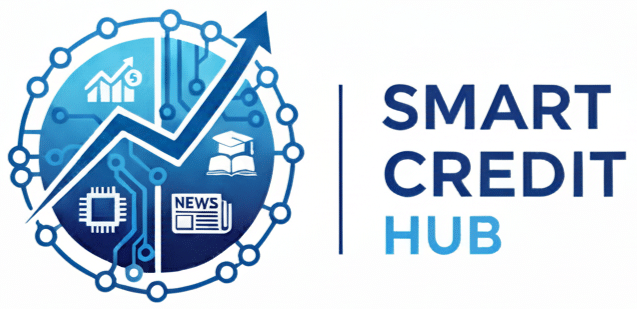Nearly 80% of big employers in the U.S. now have wellness programs. Health has gone from being a minor bonus to a key business strategy.
Related content:
You will stay on the same website.
Wellness is more than just gym deals. Employers start programs that help with physical, mental, and emotional health. They offer fitness centers, help in quitting smoking, teletherapy, and classes to manage stress.
The buzz around wellness perks is growing fast among HR folks and the business media. Studies from big organizations show more companies are getting on board. Programs like these are key for hiring, holding on to staff, and building a strong company image.
This piece gives details for U.S. bosses, HR experts, and policy-makers on making good wellness plans. It talks about what programs there are, their perks, issues that might come up, and legal stuff to think about. Also, it looks at new trends like wellness for remote workers and using technology.
Readers will learn how to figure out ROI, make plans that fit different types of teams, and see examples from big companies. The aim is to help groups create complete wellness strategies. These should make employees healthier and bring real value to the business.
Definition of Wellness Programs
Let’s dive into what wellness programs really mean. They are efforts started by employers to boost the health of their teams and achieve company aims.
Such programs might involve getting vaccines and health checks to prevent illness. Or, they might help manage diseases and offer workplace help when needed.
How these programs are given can vary. Some are held at work like gym access and health events. Others use online tools and video health visits. Many mix both in-person and digital ways.
Different groups play a big role in making these efforts work well. This includes HR folks, benefits managers, health teams, and companies like Virgin Pulse. They work together to set up and manage these health initiatives.
Important parts of wellness programs are health checks and screenings. They also focus on handling long-term illnesses like diabetes. Plus, they support mental well-being with services like counseling.
They also encourage keeping fit, eating well, quitting smoking, and work policies that promote overall health. These efforts often link to improving work output, controlling health costs, supporting diversity, and being socially responsible.
Wellness programs are great when they meet what employees need. When done right, they lessen missed work days and boost involvement. It’s all about finding the right mix that benefits both the team and the business.
Benefits of Implementing Wellness Programs
Well-designed workplace programs offer clear benefits to both workers and their bosses. Research from RAND Corporation and the CDC shows that better wellness leads to less absenteeism and presenteeism. This is true when the programs are based on solid evidence and are properly run.
Enhanced Employee Productivity
Healthier employees usually do their jobs better. Studies reveal that dealing with chronic illnesses and providing preventive care improves productivity. When many employees join in, businesses see less sick leave and more work done per hour.
Companies that keep an eye on outcomes notice that as wellness improves, so does productivity. Simple steps like offering flu shots at work or giving money for gym memberships can reduce presenteeism and elevate the quality of work.
Reduction in Healthcare Costs
Wellness initiatives can cut down on healthcare claims by focusing on stopping illnesses before they start and managing chronic diseases. Some studies find small savings, while others point out the benefits of focusing on those at higher risk.
The success in cutting costs over time often comes from how the program is put together. This includes keeping information private and keeping employees involved. Firms that offer screenings, health coaching, and manage care often see the best reductions in healthcare spending.
Improved Employee Morale
When a company provides wellness benefits, it shows employees they are valued. Gallup and Deloitte surveys show that such benefits lead to more engaged workers and fewer of them leaving.
Adding mental health support, flexible work hours, and rewards reduces burnout. It creates a welcoming workplace that attracts and keeps people. Plus, there tend to be fewer disability claims, safer work environments, and a better reputation for the employer. Making these improvements requires focusing on customizing programs, ensuring privacy, and keeping track of how many take part.
Popular Types of Wellness Programs
Companies that start wellness programs often see more engagement and fewer people missing work. These programs mix physical, mental, and nutritional help so workers get all-around support. Starting with small changes and rewards makes joining in both easy and lasting.
Physical health initiatives include activities, prevention, and making workspaces comfortable. You might see on-site gyms, cheap gym memberships, group workouts, and walking contests. Big companies like Google offer gym facilities, while smaller ones might pay for your gym fees.
Ergonomic assessments, shot clinics, and health checks are helpful too. These actions lower the chance of getting hurt and keep you physically well for a long time.
Mental health support gives access to counseling, emergency help, and learning to bounce back. Programs to assist employees, online therapy, mindfulness sessions, and training for managers are ways to help handle stress. Companies often work with services like BetterHelp and Lyra Health to reach more people.
Programs at work that make it okay to ask for help can make people want to stay and feel happier. Short workshops on a regular basis teach quick wellness tips.
Nutritional guidance focuses on making better food choices and forming good eating habits. Offering healthy food at work, advice on nutrition, managing weight, and tools for planning meals are typical. Working with nutrition apps and trying to eat less sugar helps everyone eat better.
Easy tips and recipes can give workers simple ways to be healthier at home.
Mixing support for physical, mental, and nutritional health offers a complete wellness plan. Adding training on resilience and group activities makes emotional health better and can be seen in health improvements.
| Program Type | Typical Offerings | Common Partners | Primary Benefit |
|---|---|---|---|
| Physical Health Initiatives | On-site gyms, gym reimbursements, group classes, ergonomic assessments, screenings | Local fitness centers, corporate wellness vendors | Improved mobility, fewer work-related injuries |
| Mental Health Support | EAPs, teletherapy, mindfulness workshops, manager training, crisis lines | BetterHelp, Lyra Health, local counselors | Reduced stress, better focus and morale |
| Nutritional Guidance | Healthy cafeterias, nutrition counseling, meal-planning apps, weight programs | Nutrition apps, registered dietitians, foodservice partners | Healthier eating, improved long-term health markers |
| Incentives & Engagement | Financial incentives, challenges, gamification, recognition | Wellness platforms, HR teams | Higher participation, sustained behavior change |
Role of Employer in Wellness Programs
Employers lead the way in health at work. A strong employer role can change a short-term project into a lasting wellness culture. Support from top leaders makes wellness a normal part of work.
It matters when leaders live healthily. If CEOs and managers are healthy, more employees will follow. Support from leadership gives weight to wellness policies and boosts participation.
Setting up a wellness team keeps efforts strong. This team should include HR, experts in benefits, health pros, and staff. They can help shape, track, and update wellness plans regularly.
Leadership Support and Commitment
Top leaders can build trust as wellness champions. They can support flexible work for exercise, join mental wellness events, and celebrate achievements. This makes wellness efforts feel true, not just for show.
It’s important to train managers on spotting burnout and saving time for health. This helps keep practices uniform in all teams. Supervisors can guide employees to helpful programs and check in kindly.
Employee Engagement Strategies
Better engagement comes from clear messages and options. Messages should fit different groups like parents, remote workers, and new employees. This makes programs more appealing and boosts sign-ups.
Incentives and trial programs show what’s effective. Rewards, contests, and groups provide quick insights. Test phases help improve wellness plans before introducing them widely.
Keeping programs up-to-date is crucial. Plan regular updates, celebrate successes, and report openly. These actions keep energy up and show the value of engaging employees.
Measuring the Effectiveness of Wellness Programs
Measuring wellness programs starts with clear goals and consistent data collection. Organizations that track outcomes and processes can show their value. They refine offerings and direct wellness resources where they matter most.

Key performance indicators (KPIs) make it easy to see progress. Below is a list of the most used KPIs. Employers evaluate their impact and return on investment with them.
- Participation rates and program enrollment
- Engagement metrics such as app logins and class attendance
- Health outcomes: biometric changes like blood pressure or HbA1c
- Absenteeism and presenteeism measures
- Trends in healthcare claims and cost per employee
- Employee retention and satisfaction scores
Data sources are key for analysis. They include vendor dashboards and de-identified claims. Also, HRIS integration and third-party evaluators are important. Health economists and benefits consultants do formal ROI studies for solid results.
Gathering employee feedback is crucial for ongoing improvement. Regular anonymous surveys and short pulse checks help. So do focused group sessions. They show the perceived value and barriers to participation.
Using standard measures like Net Promoter Score helps with comparisons. Mixing quantitative wellness KPIs with qualitative feedback offers a full view of program success.
Ethical data practices are a must to protect trust. They use aggregated reporting and anonymization. This keeps results useful and meets HIPAA, ADA, and GINA requirements. It’s a balance of insight and privacy.
| Metric | Data Source | What it Shows |
|---|---|---|
| Participation Rate | Program enrollment records, app logs | Level of employee uptake and appeal of wellness resources |
| Engagement | Class attendance, digital activity metrics | Ongoing use and program stickiness |
| Biometric Outcomes | Health screenings, vendor reports (de-identified) | Clinical improvements linked to interventions |
| Absenteeism & Presenteeism | HRIS, timekeeping systems | Workplace productivity and health-related work loss |
| Claims Trends | De-identified insurer data, benefits dashboards | Longer-term impact on medical spend |
| Employee Feedback | Anonymous surveys, focus groups | Perceived value, barriers, and cultural fit |
| Retention & Satisfaction | HR reports, engagement surveys | Effect on morale and workforce stability |
Challenges in Implementing Wellness Programs
Many organizations understand the benefits of improving wellness. Still, they face hurdles that slow progress. Issues like employee pushback, limited budgets, and different cultural needs are common. To overcome these challenges, it’s crucial to address them early. This allows teams to create wellness programs that truly last.
The following discussion highlights key obstacles and offers practical steps to overcome them. It pinpoints each major barrier. Then, it suggests realistic solutions for better engagement.
Resistance from Employees
Privacy concerns and doubts about employer intentions lead some employees to resist wellness initiatives. Concerns about time and fear of judgment add to these barriers.
Starting with optional participation and private resources is a good first step. Being open and clear about the goals and privacy of data builds trust. Offering flexibility and anonymity can also lower barriers to embracing wellness.
Budget Constraints
Tight budgets force difficult decisions regarding the scope and quality of wellness programs. This pressure can lead to reduced services or delayed starts.
Beginning with a phased approach can place focus on the most impactful actions. Collaborations with local clinics, affordable digital tools, and negotiating with vendors can make funds go further. This strategy maintains program viability and demonstrates early success.
Cultural Considerations
Diverse workplaces present unique challenges due to varying ages, incomes, and cultural health beliefs. Differences in language and wellness beliefs can hinder participation.
Creating inclusive programs and offering culturally competent resources are key. Services like translation, diverse communication methods, and feedback from employee groups address these needs. They show respect and relevance to varied perspectives.
| Challenge | Common Causes | Practical Actions |
|---|---|---|
| Low Participation | Privacy fears, time pressure, stigma | Opt-in options, confidential services, flexible scheduling |
| Limited Funding | Small budget for wellness, competing priorities | Phased rollouts, digital tools, community partnerships |
| Cultural Misfit | Language gaps, diverse health beliefs | Culturally tailored materials, translations, employee input |
| Legal and Ethical Hurdles | Incentives tied to health outcomes, discrimination risk | Follow regulations, use non-discriminatory incentives, get legal review |
| Measurement Difficulty | Confounding factors, long time to show impact | Use short-term KPIs, mixed methods, set realistic timelines |
Trends in Workplace Wellness
Workplace wellness trends are now moving towards flexible, tech-friendly options. They help employees working from home and in the office. We’ll look at what HR teams and benefits managers are doing now.
Rise of Remote Wellness Initiatives
After the pandemic, companies like Salesforce and Microsoft introduced remote perks. They offer virtual fitness, online mental help, and teletherapy. These services keep employees’ routines consistent at home.
Home-office setups get ergonomic support to lower injury risks. Teams connect with virtual coffee chats and activities. These steps fit into larger health strategies focusing on prevention and community.
Integration with Technology and Apps
Apps and platform partnerships make wellness programs easier to scale. Partners like Virgin Pulse, Calm, and Welltok offer various health content. Fitbit and Apple Watch provide valuable engagement data.
This tech helps provide AI-based coaching and online health visits. Data from assessments and behavior shape personalized help. As data use increases, security and consent are key for choosing vendors and policies.
Challenges encourage healthy living, and support networks improve mental health. Employers are blending social features with personalized data. This increases involvement and benefits.
| Trend | Typical Tools | Primary Benefit |
|---|---|---|
| Remote wellness programs | Virtual classes, ergonomic stipends, teletherapy | Access for hybrid and remote employees |
| Wellness apps and platforms | Virgin Pulse, Calm, Welltok, mobile apps | Scalable content and engagement |
| Wearables and analytics | Fitbit, Apple Watch, AI dashboards | Personalization and preventive insights |
| Social and preventive design | Team challenges, peer networks, preventive screenings | Stronger community and lower risk |
| Privacy and compliance focus | Consent frameworks, secure vendors, data policies | Trust and legal protection |
Case Studies of Successful Wellness Programs
Real-life wellness program stories show how businesses grow initiatives and gauge their success. Insights from both big and small companies uncover trends useful for any HR department. These stories share how programs are designed, how they get people to take part, and the wellness gains they report.
Examples from Major Corporations
Google provides on-site clinics, places to work out, and helps with mental health to keep engagement high. Microsoft offers fitness discounts, strong employee groups, and mental health resources online. Johnson & Johnson has ongoing programs focusing on stopping chronic diseases like diabetes and heart risks.
These big companies see a lot of people joining their wellness programs and feeling better about their health. Surveys inside these companies often find less stress and a better balance between work and life. Public data shows these efforts lead to fewer people missing work and more staying at the company when the programs are consistently run and well-advertised.
Mid-size and Small Business Examples
Smaller companies are getting creative with online wellness, flexible work hours, and local gym deals to fit their budgets. A manufacturing business in a particular area started using telehealth and changed work schedules to make health care easier to get to. A small marketing firm introduced a fitness program with company support and peer coaching to lift spirits.
These examples show that wellness benefits don’t have to break the bank. They can be customized, affordable, and grown while still bringing real results in how engaged and productive people are.
Lessons Learned
Winning programs teach us some clear lessons. Leaders must openly commit and set the example. Kicking things off with a survey to see what employees need focuses the program on what’s actually important.
Starting with a small test program reduces risks and helps figure out what to measure. Use proven ways to measure outcomes and always keep health information of employees private. Improving based on what people say keeps the program in tune and encourages more to join in.
| Program Element | Large Employer Example | Small to Mid-size Example | Key Lesson |
|---|---|---|---|
| On-site clinical services | Google: clinics and preventive care | Regional hospital: periodic nurse visits | On-site care increases access and follow-up |
| Mental health resources | Microsoft: digital therapy and EAP | Agency: contracted counselors and workshops | Multiple entry points boost utilization |
| Fitness support | Johnson & Johnson: subsidized facilities | Small firm: gym stipends and local partnerships | Flexible options fit varied schedules |
| Chronic disease programs | Johnson & Johnson: diabetes prevention | Manufacturing: telehealth monitoring | Evidence-based interventions yield better outcomes |
| Measurement approach | Large employers: longitudinal surveys and claims data | Small employers: short surveys and participation metrics | Simple, consistent metrics enable improvement |
There are common mistakes to dodge, as the stories show. Giving rewards that punish brings bad feelings. Not talking clearly about the program drops participation. If programs don’t meet specific needs or lack a way to measure success, they often fail.
Choosing proven methods like cognitive therapy for depression and CDC-approved diabetes prevention works better. These approaches make wellness gains clearer and support continuous spending on the programs.
Importance of Personalization in Wellness Programs
Wellness personalization changes general perks into meaningful help that fits each employee. Workers vary by their health, job, and life stage. Programs tailored to these differences improve engagement and results.
Tailoring Programs to Employee Needs
Segmenting wellness programs makes them feel more relevant. Employers can group employees by interests or health risks. For example, those working night shifts might need different support than daytime office staff.
Creating programs with employee input ensures they fit well. Big companies like Microsoft use focus groups to make services better. This builds trust and makes sure resources aren’t wasted.
Assessing Individual Health Profiles
Health assessments and screenings help identify employee needs. They guide employees to the right doctors or specialists. Keeping this data private encourages more people to participate without fear.
After assessing, offering real help is key. Employers can provide help like coaching or online resources. Automation can remind employees to stay healthy while keeping their info safe.
Every step should be fair. Personalization must include everyone, even those with chronic issues or less access. Make sure there are free or low-cost options so everyone can join in.
Legal and Ethical Considerations
Workplace wellness programs come with legal and ethical issues employers need to handle wisely. Having clear policies helps balance the program’s aims and employee rights. Being proactive about legal wellness concerns lowers disputes and builds trust.

Compliance with Employment Laws
Employers need to follow federal laws like the Americans with Disabilities Act and the Genetic Information Nondiscrimination Act. The Equal Employment Opportunity Commission offers advice on legal incentives and how to avoid discrimination.
Wellness program creators should make sure they comply with HIPAA when health plans are involved. A lawyer can help with making reasonable changes and alternative options for employees with disabilities.
Privacy Concerns
Gathering health info through HRAs, biometric screenings, or vendor systems brings up privacy issues. It’s important to limit personal information and keep it safe.
Good practices include making reports without identifying individuals, strong vendor contracts, and following HIPAA where needed. Notices should tell participants what data is collected and its use.
Ethical practices encourage choosing to join, designs that are fair, and respecting employees’ choices. Checking on third-party vendors carefully, having clear contract terms, and regularly reviewing wellness program compliance keeps everyone safe.
Future of Wellness Programs in Corporate Settings
Companies are now seeing health as a key long-term investment. They are combining preventive care, mental health support, and social help. This approach creates stronger teams and follows new trends in wellness with a focus on real results.
Predictions for the Next Decade
Soon, workplaces will bring together medical care, behavioral help, and local resources. The use of AI and data analysis will make wellness plans more personal and effective.
Mental health benefits will grow to include therapy, group support, and emergency aid. Services to help with money and caregiving will also be offered. This supports overall health. Companies will provide complete wellness programs, especially for remote teams.
Rules on privacy and rewards will get more focus. Companies will use outside checks and data to show the value of their wellness efforts. Brands like Deloitte and Johnson & Johnson will lead in measuring these efforts accurately.
Evolving Employee Expectations
Workers now seek total wellness plans that also think about emotional and financial health. They prefer flexible work and digital tools. Such demands lead companies to create more user-friendly and equal benefits.
Equality will be a key part of benefit programs. Organizations will work to make sure their programs reach everyone. HR will work with vendors and groups to help all workers, including those part-time or with families.
Future plans will mix detailed goals, flexible tech, and a focus on what employees want. This will help wellness programs stay relevant and match company and worker needs.
Role of Human Resources in Wellness Initiatives
HR helps turn wellness ideas into reality in our workplaces. They choose wellness providers and set important policies. This sets HR’s role in wellness for real results.
HR’s Influence on Program Design
HR finds out what employees need through surveys. They look at options from places like Virgin Pulse and Calm. It’s all about getting good value, clinical support, and keeping data safe.
HR teams up with other departments to make sure everyone is on the same page. They work with finance, legal, and more to make wellness resources widely available.
Strategies for Effective Implementation
Starting slow with pilot tests helps find out what’s effective. HR sets goals like better attendance and health improvements. Support from big bosses and training for managers make these plans work every day.
Using tech helps HR manage everything smoothly. Tech makes signing up easy and tracks the benefits of joining in.
HR gets better at using data and working with vendors for strong delivery. When more help is needed, they turn to experts outside the company.
Getting feedback and checking how things are going keeps HR improving things. They use surveys and data to make wellness programs even better.
Budgeting for Wellness Programs
Creating a budget links spending to outcomes. A good budget shows expected costs like vendor fees and staff time. It helps leaders decide what wellness programs are worth.
To figure out wellness ROI, start with some basic numbers. Finance teams look at claims data and how often people miss work. They predict savings in healthcare and gains in worker happiness and staying at the job longer.
Costs vs. Return on Investment
Costs can include paying vendors yearly, money for rewards, and updating facilities. Small businesses might spend less on buildings but more on each person for vendor services. Big companies might spend more on things that lower costs for everyone.
Early results of wellness programs vary. Some save on healthcare in 2 to 5 years. Other pluses like less time off work and keeping employees can show up sooner. Looking at all benefits gives a complete picture of wellness ROI.
Here’s how to estimate ROI:
- Start by collecting basic data on claims and turnover.
- Make careful guesses about possible changes.
- Create different scenarios to test your ideas.
- Keep an eye on how engaged people are as another type of benefit.
Funding Sources for Wellness Initiatives
Employers can use their own budgets, work with insurers, or use special accounts to pay for programs. Health plans may help pay if a program is proven to work. Sometimes, grants from health agencies can help start new projects.
Employers might also offer paid extras for employees or add options compatible with health savings accounts. It’s important to keep cost-sharing voluntary to keep people involved and treated fairly.
To keep costs down without losing benefits, focus on cheap but effective actions. Making deals with vendors that link fees to real results helps. Using preventive healthcare covered by insurance can also save money.
| Expense Category | Typical Range (Annual) | Impact on Wellness ROI | Cost-Containment Tip |
|---|---|---|---|
| Vendor fees (apps, coaching) | $15–$150 per employee | Direct: program delivery and engagement | Negotiate pilot-to-scale pricing and outcome clauses |
| Incentives and rewards | $20–$300 per participating employee | Boosts participation; influences short-term metrics | Use tiered incentives and noncash rewards |
| On-site infrastructure | $1,000–$200,000 (one-time) | Visible asset that can improve morale | Prioritize modular, shared resources over build-outs |
| Staff time (HR/admin) | 5–20% of HR budget | Essential for implementation and governance | Assign a program manager and use vendor support |
| Technology and analytics | $5,000–$100,000 | Enables measurement of wellness ROI | Start with minimal viable analytics and scale |
For lasting funding, set clear goals and regularly check how the money is used. This allows leaders to change funding based on what works and new funding options.
Communication Strategies for Promoting Wellness
Organizations need clear wellness communication strategies to promote wellbeing at work. They should start with a simple program brand and a yearly calendar. This calendar should map out each campaign. It’s important to have offerings that are supportive and optional, keep things private, and show the real benefits to gain trust.
Effective internal marketing uses many channels to spread wellness messages. This includes emails, posts on the intranet, team meetings, posters, and a group of champions. Sharing stories and testimonials from employees adds a personal touch and makes the message more believable.
Custom messages get better results. Break down your audience by their job, where they are, and their schedules. Make sure the content matches each group. Avoid sending too many messages at once and offer simple wellness tips staff can use immediately.
Feedback makes your wellness program better. Collect thoughts through quick surveys, suggestion boxes, and meetings to listen. Use this feedback to make changes and let employees see how their ideas make a difference.
To see if campaigns work, keep track of some numbers. Look at how many people open emails, click on links, and sign up because of a campaign. Improve your messages by testing different subject lines and images. Share what you learn with leaders and teams to keep everyone excited.
Keep people interested with smart strategies. Have weeks focused on certain themes, share success stories, and set up small challenges. Train managers to talk about wellness programs in meetings and add clear next steps in all communications.
The table below shows different ways to reach employees with wellness messages and what makes each one effective.
| Channel | Best Use | Strength | Metric to Track |
|---|---|---|---|
| Announcements, event invites | Wide reach, measurable | Open rate, click-through rate | |
| Intranet | Resource hub, program calendar | Persistent reference, searchable | Page views, time on page |
| Team meetings | Manager-led reminders | High trust, conversational | Enrollment lift after meeting |
| Posters and signage | Awareness, visual prompts | Constant visibility | Event sign-ups, QR scans |
| Wellness champions | Peer outreach, testimonials | Relatable advocacy | Referral enrollments |
| Pulse surveys | Feedback and idea collection | Real-time insight | Response rate, suggestion volume |
Resources for Developing Wellness Programs
Creating a workplace wellness program begins with finding the right resources and training. Organizations should start by certifying HR staff through courses like the Certified Corporate Wellness Specialist. They can also learn from workshops by the Society for Human Resource Management and the National Wellness Institute. Additionally, webinars from public health agencies and vendors provide short, useful learning sessions.
Adopting best practices is crucial, focusing on evidence-based design and thorough evaluations. Tools and research from the CDC and RAND Corporation offer guidance on evaluating programs effectively and focusing on fairness. Deloitte and academic studies highlight the importance of measurable outcomes and continuous program improvements.
It’s easier to find vendors with directories. Teams can compare providers like Virgin Pulse, Limeade, and Lyra Health, looking at their performance, data safety, and prices. Guides for contracts, KPI dashboards, and design checklists help choose vendors quickly and lower legal risks.
To stay informed, continue learning. Joining networks, attending WELCOA events, and reading industry publications keep teams up-to-date. Using CDC and WHO toolkits with vendor resources offers a comprehensive set of tools for ongoing wellness program achievements.



